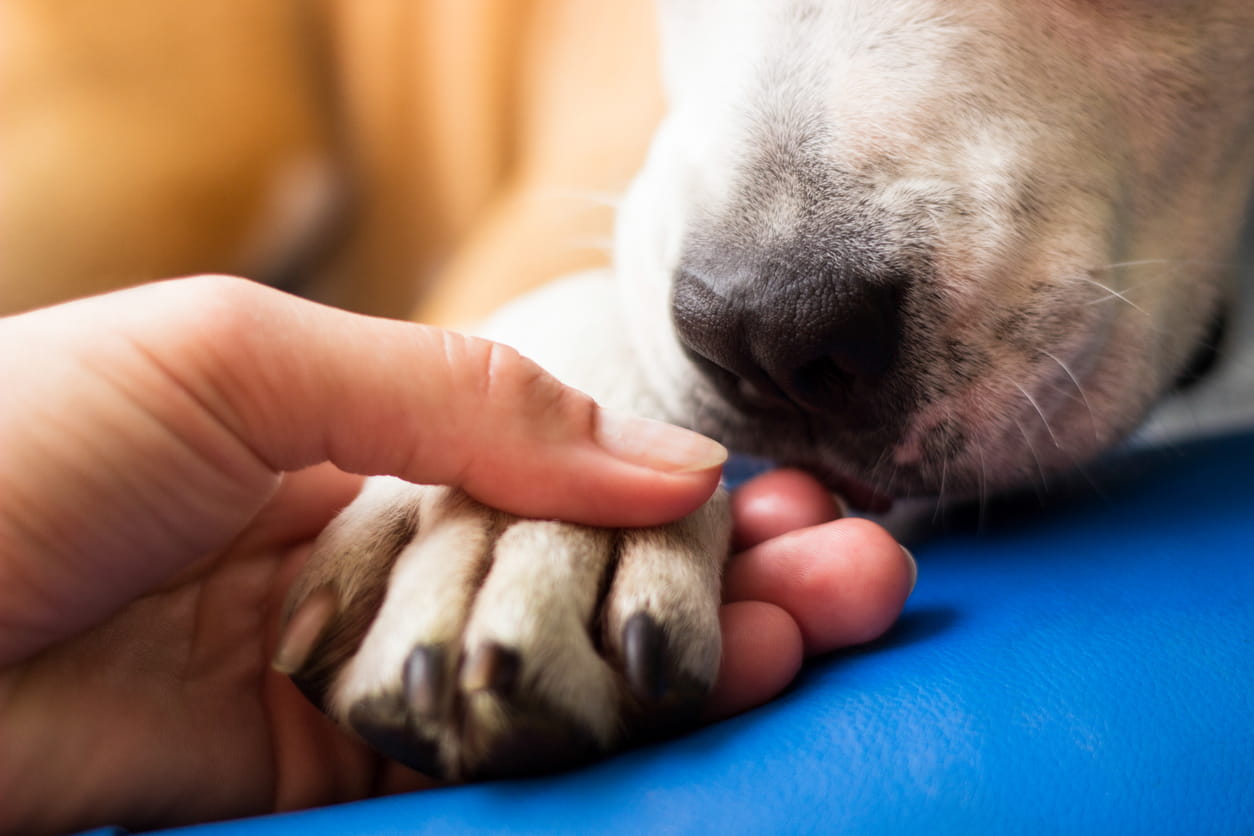What you need to know about dog bite prevention and treatment

Dog bites are a common occurrence that can be quite distressing, especially when they happen to a loved one. They can bite if they feel cornered or scared, and it's important to remember that even the most gentle canine can resort to biting when in pain.
While learning to spot the signs of anxiety or discomfort in a dog can be your first line of defense in preventing any unpleasant incidents, knowing what to do — both to prevent dog bites and how to handle the situation if it arises — can help ensure everyone's safety.
Preventing dog bites
Keeping dog bites from happening in the first place can be achieved through proper education and responsible pet ownership. It's essential to teach both adults and children how to interact respectfully with dogs. This means not bothering them while they're eating or sleeping, steering clear of rapid, unexpected movements and never attempting to pet an unfamiliar dog without the owner's express permission.
All these can cause stress to the dog and may trigger a defensive response. And it’s important to know that most dog bite incidents could have been avoided if the dog's boundaries weren’t pushed or crossed.
Ensuring everyone is aware of these guidelines can go a long way in preventing any unfortunate dog bite incidents.
Acting fast when a dog bite occurs
In the unfortunate event that a dog bite happens, the steps you take immediately afterwards are crucial in minimizing potential harm.
"First and foremost, your priority should be to ensure the safety of all involved, including separating the bitten individual from the dog," says Jennifer Campbell, DO, medical director of Main Line Health Urgent Care. "Once everyone is secure, focus your attention on the wound."
Gently clean it with soap and warm water, which helps to decrease the possibility of a dog bite infection. Should the bite be severe and causing significant bleeding, it's essential to use a clean cloth or bandage to apply pressure to the area and stem the bleeding. These immediate responses to a dog bite are the initial steps in mitigating harm and effectively treating the wound.
"Patients often wait for signs of infection to seek medical opinion leading us to ‘chase our tails’ trying to get an infection under control," says Dr. Campbell. "So we can’t stress enough how important it is to seek medical attention immediately."
Knowing when to seek medical attention
Once you've done the immediate first aid, it's crucial to get the wound checked by a health care professional. Even what seems like a minor bite can harbor bacteria from the dog's mouth, increasing the risk of infection.
"When watching for signs of infection, new pain is a key indicator," says Dr. Campbell. "All bites will be painful from the start, but they should gradually improve every day. If you notice new pain as the days go by, it could be the first sign of an infection." Other signs include redness, swelling, drainage and fever.
You'll likely receive a prescription for dog bite antibiotics as a preventative measure. If the bite is more serious, requiring stitches or additional intervention, rest assured that the medical team will prioritize wound care and evaluate any risk of diseases, including rabies.
"Don't hesitate or delay in seeking medical help," says Dr. Campbell. "It's always better to be safe and take the necessary precautions."
Post-bite care
After the initial treatment for a dog bite, keeping on top of your wound care regimen is key to encourage healing and prevent any complications. This often entails changing bandages regularly, ensuring the area remains clean and dry.
Remember to take any prescribed antibiotics consistently to ward off potential infection. It's important to keep an eye out for any warning signs, such as increased redness, swelling or discomfort around the wound. These symptoms could indicate a developing infection and should be addressed promptly with your health care provider.
If you've been bitten by a dog that isn't familiar to you, or one who has no record of receiving a rabies vaccine, you should visit the emergency department for treatment as soon as possible. Rabies is a fatal illness when left untreated that can be transmitted through dog bites, so timely identification and treatment are crucial. Symptoms may include fever, headache or feeling generally unwell.
Lastly, don’t forget to report the bite to your local animal control or public health department. They can provide additional guidance and might also need to monitor the dog for signs of disease.
Caring for a dog bite might seem daunting, but remember, your health care team is there to support you throughout your recovery journey. Keeping these recommendations in mind will aid in your smooth recovery and keep you safe in the unfortunate event of a dog bite.
Next steps:
Find a Main Line Health emergency department near you
Learn more about urgent care at Main Line Health
Emergency room or urgent care: Making the right call for your health
 Content you want, delivered to your inbox
Content you want, delivered to your inbox
Want to get the latest health and wellness articles delivered right to your inbox?
Subscribe to the Well Ahead Newsletter.
